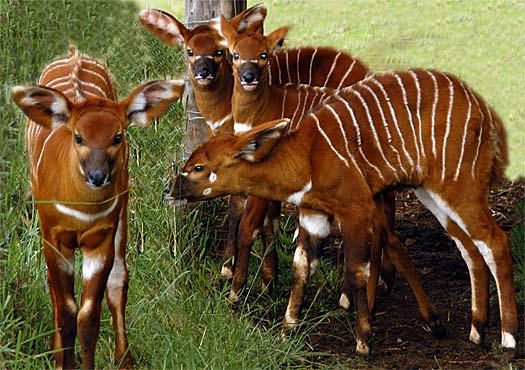Bongo – Beautiful Striped Forest Antelope
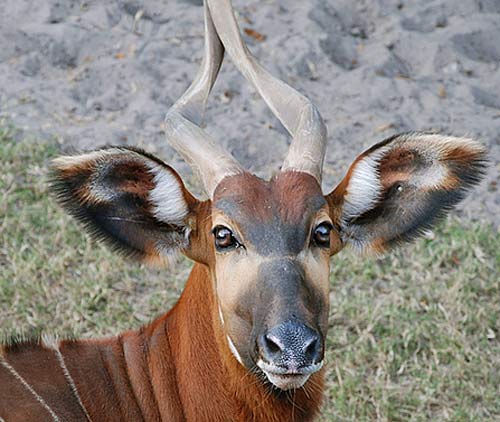
In the forests of Africa live one of the most unique and interesting species of antelope in the world, commonly known as the bongo. Of the species Tragelaphus eurycerus there are two subspecies, the Western or Lowland bongo and the Eastern, or Mountain bongo. Both are a beautiful ruddy red/brown color with prominent beige stripes that match the elongated, slightly twisted horns on their head. They have the unique distinction of being one of the only horned animals where both male and females in the species have the same large bony horns.
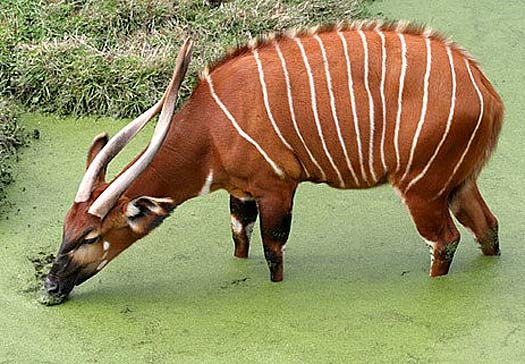
Of the two subspecies, the lowland bongo is considered Not Threatened by the IUCN, while the mountain bongo is sadly critically endangered due to illegal hunting and disease. There are now more individual mountain bongos in captivity than there are living in the wild.
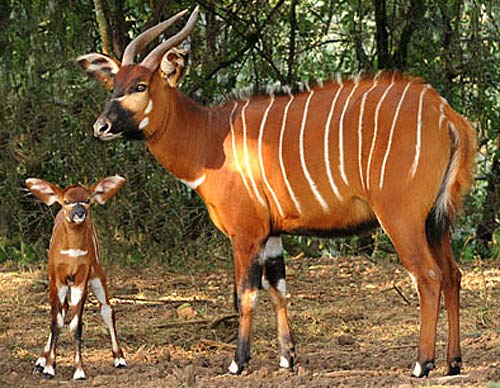
Both subspecies live on a very diverse herbivore’s diet which includes grasses, fruits and just about every part of the trees that grow in and around their habitat, including vines, bark, leaves, pith and roots as well as the surrounding shrubs and bushes. Like some other large hooved animals, bongos require salt in their diet, and will travel long distances to find natural salt licks.
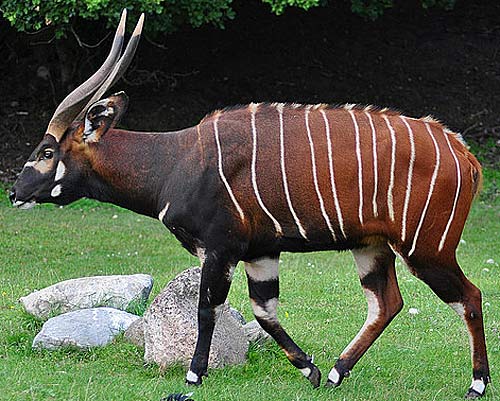
Fact: both male and female bongos are roughly the same size in adulthood. They stand up to 4.5 feet (1.3m) at the shoulder, and grow up to 10.5 feet long (3.20 m). The principle difference in the appearance of male and female bongos is their weight, because the males like to pack on a few more pounds, they can weigh up to 900 lbs (405 kg), while females at most top out around 520 pounds (235 kg).
